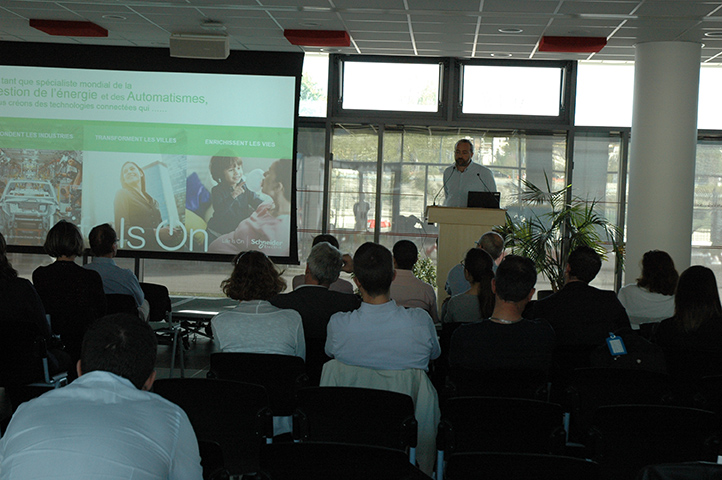IRT Nanoelec held its fifth market-specific meeting on how IRT Nanoelec programs can contribute to innovation in data centers.
The event brought in a big audience and the speakers shared their insights into how the market, technologies, and applications will shape the future of data centers.

According to Yole, data traffic is expected to triple by 2020 and 80% of all traffic will go through data centers. By 2021 the data center and UPS market is expected to generate revenue of 1 billion.
Leti gave two presentations, one on technology, the other on design. The market’s need for optical data transmission solutions has now been confirmed and a number of developments in progress will bring electro-optical conversion closer to the switch. The market is also being shaped by two clearly-identified technological breakthroughs: optical-fiber-to-chip assembly and laser light sources.
In terms of architecture, 3D integration will improve circuit performance and lower energy consumption. This will impact data center energy consumption in particular. Today, it takes 10 picojoules to transfer 1 bit of data. 3D technology should improve this ratio tenfold.
ILL and IROC Technologie (a small Grenoble-based company) presented a type of characterization unlike nothing else available in France. The technique can be used to test consumer components (like memory) for sensitivity to radiation, an issue that is crucial for large data-storage applications, where the very large number of memory chips means that the overall reliability of the system is affected by soft faults created by neutrons generated in the upper atmosphere and that reach the earth. Component hardening and irradiation experiments are one way to improve circuit design.
Schneider Electric, a keen observer of new IT trends (edge computing, cloud computing, big data) and the impact of new types of uses driven by digital technology provided insights into how data centers will change in the future. The data center ecosystem will shift, addressing new trends (edge, big data, IoT, M2M, augmented reality, and more). Tomorrow’s data centers will have to be modular and adaptable, flexible and upgradeable, robust and resilient, standardized and automated, and environmentally responsible if they are to help keep the digital economy’s carbon footprint to a minimum.
Download the presentations




